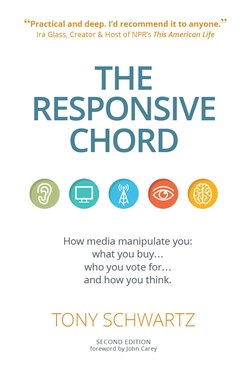Читать книгу The Responsive Chord - Tony Schwartz - Страница 11
ОглавлениеHow to Strike a Responsive Chord
In the 1930s, a picture of a factory with smoke billowing from several smokestacks meant “prosperity.” Today, the same picture means “pollution.”
A photograph, film, tape, or book has no meaning outside the possible contexts in which a person might experience it, or outside the body of stored experiences a person will bring to the situation in making sense of what he sees or hears. The stimulus put into the environment will interact with all the elements present in a listening or viewing situation and become communication only through this resonance process.
To achieve a behavioral effect, whether persuading someone to buy a product or teaching a person about history, one designs stimuli that will resonate with the elements in a communication environment to produce that effect. The traditional communication process is thus reversed. A “message” is not the starting point for communicating. It is the final product arrived at after considering the effect we hope to achieve and the communication environment where people will experience our stimuli.
In developing a set of useful principles for communicating, it is necessary to abandon most of the traditional rules we were taught. A resonance approach does not begin by asking, “What do I want to say?” We seek to strike a responsive chord in people, not get a message across. This involves, first, examining how stored experiences are patterned in our brain, and how previous experiences condition us to perceive new stimuli. Second, we must understand the characteristics of the new communication environment, and how people use media in their lives. Only at the final stage do we consider the content of a message, and this will be determined by the effect we want to achieve and the environment where our content will take on meaning.
Patterning of Stored Auditory Experiences
